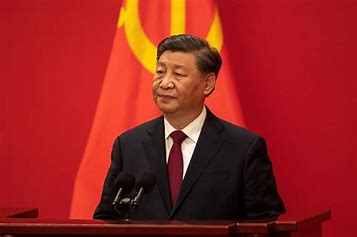A pause does not mean that Xi Jinping has abandoned his impossible objective of occupying more territory at the cost of India.
Prime Minister Narendra Modi and External Affairs Minister S. Jaishankar know that Xi Jinping has only pushed the Pause button and not the Stop button on aggressive action against India. Despite the agreement on disengagement reached between the two sides at long last after the Doklam incident. PLA soldiers marched into the Bhutanese territory in June 2017 in order to provide cover for a crew that was building a road across it. Such a move would have severely compromised Indian security, apart from trampling on the sovereign rights of Bhutan, which is why Prime Minister Narendra Modi sent troops
2023 saw a pause in such operations, and thus far, so has 2024. An important factor has been resolve on the Indian side to resist any effort at encroachment of national territory. Such a pause does not mean that CCP General Secretary Xi Jinping has abandoned his unwise plan of occupying more territory at the cost of India, but that during that period 2021-23, Xi Jinping saw his own personal popularity slide in the People’s Republic of China. His confidants, most of whom have a partiality for military rather than diplomatic solutions to territorial disputes, have recommended that he work towards de facto control of Taiwan by 2027. Such an achievement would in their view ensure both a fourth term and a place in history together with Mao. The rationalsations for arguing that Taiwan is part of China have been cooked up by the Chinese side since the CCP took over in 1949, and have no foundation in history. If India were going the way of China under the Chinese Communist Party (CCP) but avoided manufacturing history including through fake maps, vast tracts of land across the western and eastern boundaries of India could have been claimed by India, as during the past, princes from India came to these lands and ruled over them, in the process facilitating the migration of not just Indian culture but Indian people to such locations. Many such settlers intermarried with the local people, which is why several millions in such lands have a bit of India in their DNA, apart from magnificent monuments built by the local people who were ruled by princes from India. In Tibet, India had long possessed significant rights, as both Indians and Tibetans have many common strands in their culture and history, way more than the Tibetans ever had with China, which has occupied the land since 1950, cutting off most of Tibet into separate provinces into which were settled large numbers of people from southern China. To this day, elements of the population in provinces carved out of Tibet during the 1950s share several features with the people of India. An example is the Naxi people in Yunnan, who are matriarchal in the way segments of the population of India in the south and northeast have been.
After fiascos such as the effort at Zero Covid in 2022 and the economic damage caused by reaction in democracies to PRC efforts at hollowing out their industry and absorbing the same have made Xi unpopular and vulnerable to mass civil unrest. His confidants say that only a military victory would succeed in replenishing the popularity of Xi. Aware that a large-scale military incursion into India may prove a disaster since PM Modi became PM and showed his mettle in Doklam, Xi appears to have changed his focus to Taiwan. The small but prosperous country famed for its technological prowess is now the target of psychological operations and kinetic encirclement intended to weaken the resolve of the island’s 26 million citizens to resist control by the PRC and making it another Hong Kong, a fully Chinese city in all but name. The name Hong Kong Special Autonomous Region has become an object of ridicule because there is zero autonomy in Hong Kong. Since the 1990s, Beijing has sought to make Shanghai and other cities within the PRC effective competitors to Hong Kong in foreign investment, and have succeeded. By 2019, Hong Kong was drained of any administrative freedom, and any Hong Kong citizen who dares to seek to restore its past status faces a long spell in prison. As a consequence of such repression, even those in Taiwan who favoured absorption by the PRC under the One Country Two Systems model used in Hong Kong in 1997 have become opposed to such linkages. At the same time, under President Tsai Ing-wen and now President Lai Ching-te, preparedness among Taiwanese to ward off such aggression is becoming stronger. Despite Xi warning that a vote for Lai in the last Taiwanese election would mean war with China, more than 40% of voters cast aside fear and voted for him and for the Vice-Presidential candidate Bikhim Hsiao. As a consequence, Xi is having to devote more and more attention and effort in his effort at snuffing out the freedom of the Taiwanese people. Hence the Pause button on India. Should Taiwan fall, India will soon become the next target, as will Japan and the US military presence in much of the waters of the Pacific, which is why the US and Japan have joined Australia to form the Quad along with India. As the leadership in all target countries know full well, Taiwan is a frontline state in the defence of the Indo-Pacific, which is why helping to ensure its freedom is crucial to the security of the rim of the Indo-Pacific.

